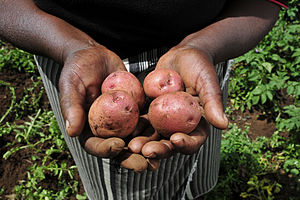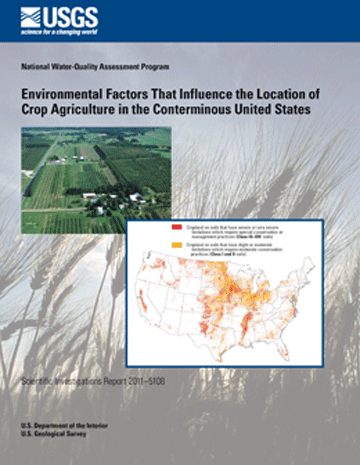Agriculture in Kenya
Agriculture in Kenya dominates Kenya's economy. 15–17 percent of Kenya's total land area has sufficient fertility and rainfall to be farmed, and 7–8 percent can be classified as first-class land.[1][2] In 2006, almost 75 percent of working Kenyans made their living by farming, compared with 80 percent in 1980.[1] About one-half of Kenya's total agricultural output is non-marketed subsistence production.[1]
Agriculture is also the largest contributor to Kenya’s gross domestic product (GDP).[1] In 2005, agriculture, including forestry and fishing, accounted for about 24 percent of the GDP, as well as 18 percent of wage employment and 50 percent of revenue from exports.[1]
Farming is the most important economic sector in Kenya, although less than 8 percent of the land is used for crop and feed production, and less than 20 percent is suitable for cultivation. Kenya is a leading producer of tea and coffee, as well as the third-leading exporter of fresh produce, such as cabbages, onions and mangoes. Small farms grow most of the corn and also produce potatoes, bananas, beans, peas and chillies.







Comments